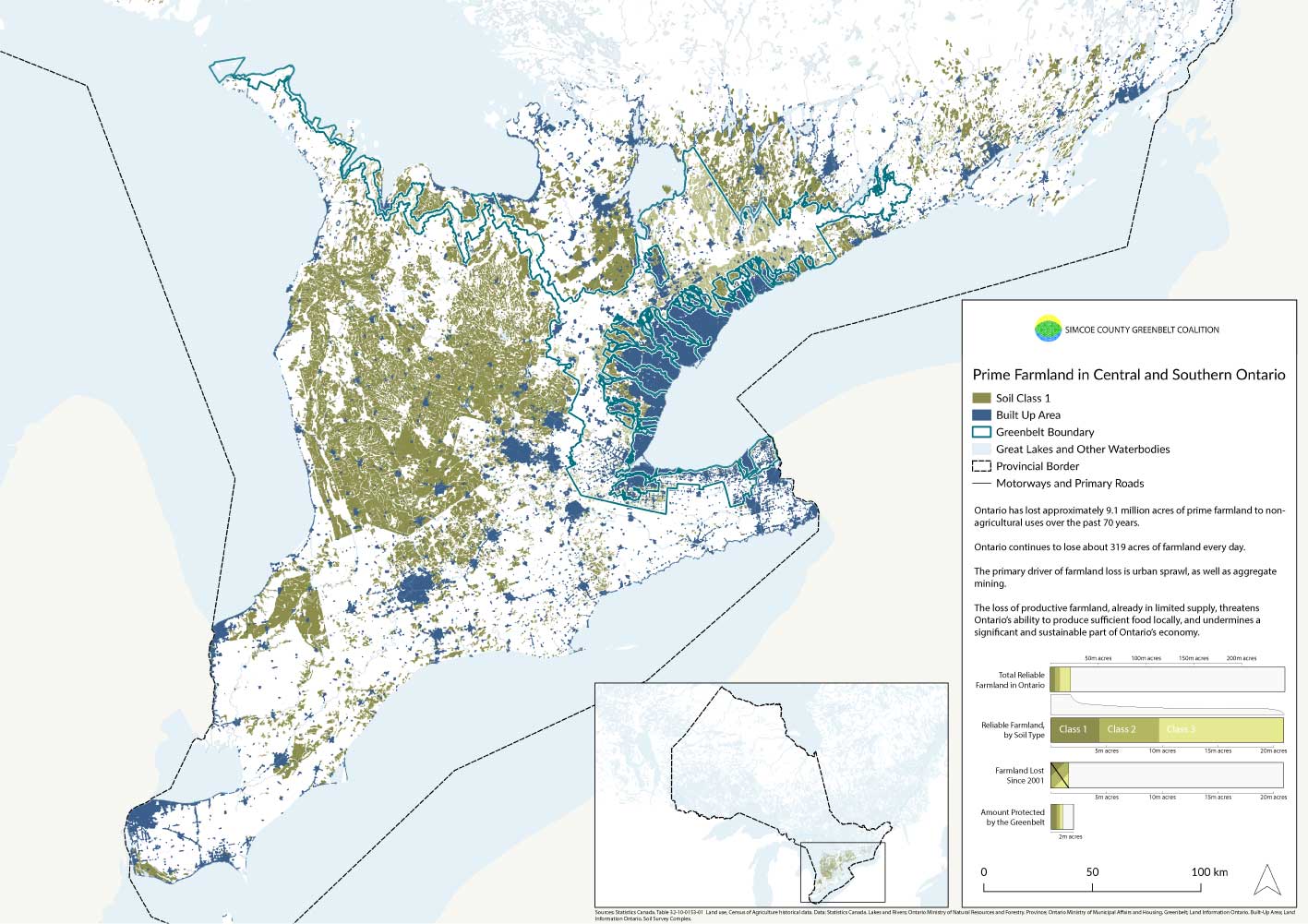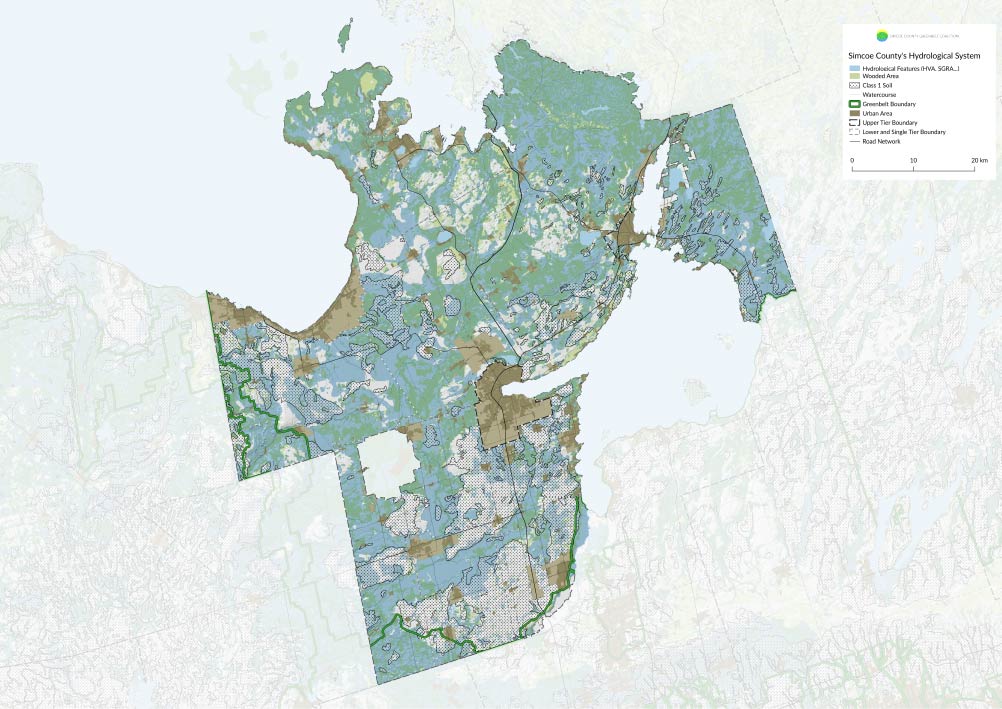Re-framing Ontario's Water and Farmland Abundance: A Call for Sustainable Stewardship
Ontario’s identity is inextricably linked to its natural bounty, and in the Canadian context, along with thousands of lakes nestled in forests and the Canadian Shield, the Great Lakes and fertile farmlands of central and southern Ontario are unique.
These resources have shaped not only our geography but our very way of life, influencing everything from our climate to our economy. However, there is a complex interplay between abundance and vulnerability that demands our attention and action. If we take what we’ve been blessed with for granted, we risk devaluing and losing it.
The Great Lakes: Ontario's Natural Treasures
The Great Lakes are more than just bodies of water; they are the lifeblood of our province. Containing 18% of the world’s surface freshwater, these inland seas give a sense of limitless abundance to Ontarians. This perception has deeply influenced our approach to agriculture, industry, and urban development, often with the assumption that water will always be available.
The lakes’ influence extends beyond water supply. They shape our day-to-day experiences and support key elements of our economy, moderating temperatures and creating unique microclimates. These conditions have given rise to thriving agricultural sectors, particularly in tender fruit and wine production. The Niagara Peninsula, for instance, owes its world-renowned vineyards and orchards to the tempering effects of Lake Ontario.
The lakes also give rise to some unique features of our winter weather. The lake effect occurs as cold air sweeps across warmer waters, picking up moisture, and depositing it as snow in the so-called Snowbelt areas of the province. This phenomenon, while sometimes challenging, is an integral part of Ontario’s character.
The Scarcity of Prime Farmland
The land suitable for agriculture in Ontario is surprisingly scarce. Only 8% of the province’s land mass is classified as Class 1, 2, or 3 soil – the grades suitable for agriculture. Only 2.37% falls into the Class 1 category, which is the cream of the crop in terms of agricultural potential.
The map below illustrates both the scarcity of Ontario’s prime farmland, and the pressure it is facing as our region’s population and economy grows.
This scarcity is compounded by the fact that prime agricultural land often overlaps with areas most desirable for urban development. The result has been a steady erosion of farmland over the past decades:
- From 2001 to 2006: 197,141 acres lost
- 2006 to 2011: 642,020 acres lost
- 2011 to 2016: 320,227 acres lost
- 2016 to 2021: 582,392 acres lost
Ontario has a relatively limited supply of prime farmland. Over the past several decades, more than 9 million acres of class 1, 2, and 3 farmland has been lost to non-agricultural uses, representing nearly half of all Ontario’s available prime farmland.
The Water-Farmland Nexus
The relationship between our water resources and farmland is symbiotic and complex. While the Great Lakes provide an abundance of freshwater, the resources that support our economic and cultural activities, including agriculture, are largely concentrated in central and southern Ontario. These freshwater systems are multifaceted in their importance:
- They provide essential drinking water for millions.
- They create habitats for diverse wildlife.
- They play a crucial role in flood mitigation.
- They contribute significantly to carbon sequestration.
- They form the foundation of our agricultural sector and local food security.
The Greenbelt: A Cornerstone of Conservation
In response to the pressing need to protect these vital resources, Ontario established the Greenbelt. This protected area preserves over 2 million acres of prime farmland, forests, wetlands, and watersheds.
The Greenbelt also stands as a bulwark against urban sprawl, protecting these resources from development and ensuring that these critical ecosystems remain viable for future generations.
Expanding Protection: The "Bluebelt" Concept
- Ensure the availability of clean water for agriculture and drinking.
- Preserve natural habitats and support biodiversity.
- Enhance the resilience of our food systems.
- Contribute to climate change mitigation efforts.
- Protect the aesthetic and recreational value of our natural landscapes.
The mapping below shows hydrological resources in Simcoe County, including Highly Vulnerable Aquifers (HVAs) and Significant Groundwater Recharge Areas (SGRAs). Woodlands and class 1 soil are also included.
Looking to the Future
As Ontario faces the dual challenges of climate change and population growth, the importance of preserving our water and agricultural resources cannot be overstated. The Greenbelt, and its expansion to include a “Bluebelt,” represents a forward-thinking approach to environmental stewardship.
By recognizing the true value of our natural abundance and addressing our hidden vulnerabilities, we can work towards a more sustainable and resilient future. This approach requires a shift in perspective – from viewing our resources as inexhaustible to understanding their fragility and interconnectedness.
The story of Ontario’s water and farmland is not just about abundance, but about responsibility. Policymakers, communities, and individuals need to become active stewards of our natural heritage. By protecting our water and farmland today, we safeguard Ontario’s environmental and economic prosperity for generations to come.


